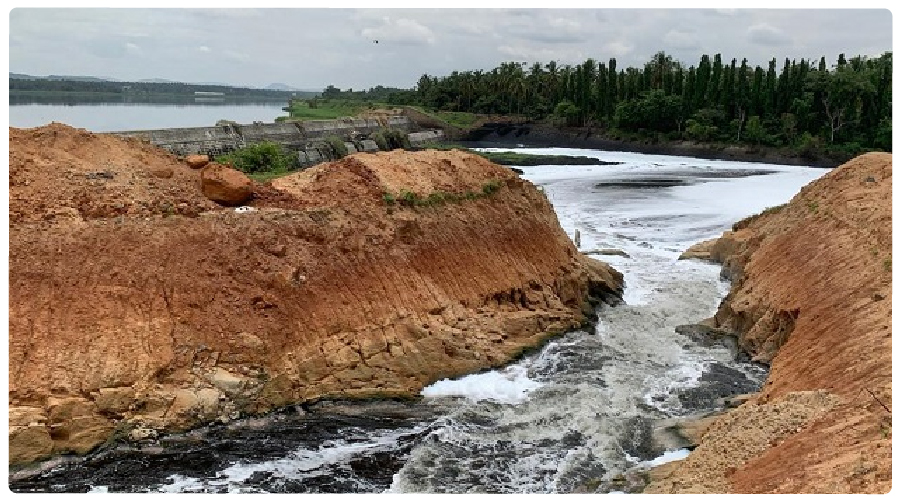When people travel on Mysore Road, they can’t help, but notice a narrow passage of dark coloured stream running parallel to the road, which they often mistake for a gutter. As disturbing as it may sound, the very stream of untreated water is the ancient River Vrishabhavathi.
River Vrishabhavathi, a pre-eminent tributary of Arkavathy, has fabled to have originated from a spring at a Temple Kadu Malleshwara in Malleshwaram. Flowing through 96 wards of Bengaluru including significant areas in the city like Rajarajeshwari Nagar, Kengri and Bapuji Nagar, the river meets the Arkavathy near Bidadi at the Outskirts of the city. Earning the moniker “Kengri Mori ” amongst the indigenous population in this region, the river is currently identified as “Vrishabhavathi Nala” in Google Maps.
However, this sacred river boasts a great significance, as it was once too pristine that its water would be used as a ‘sacred drink’ by the local masses and Gali Anjaneya temple. The river which was once considered sacred with mentions in ancient texts, today narrates a different story all together. The current predicament of the revered water body is quite ponderous for which humankind is held responsible.
The Glorious History:
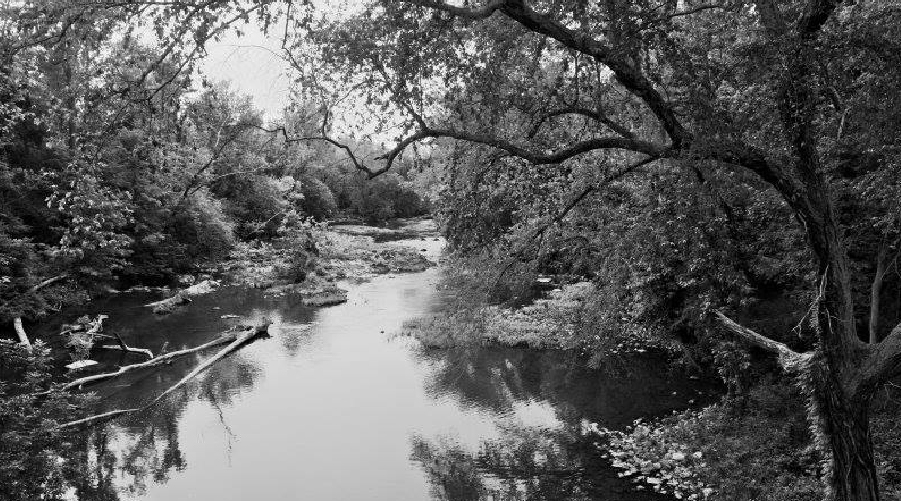
Vrishabhavathi is derived from the Sanskrit word ‘Vrishabha’, which means Bull. It is said that the river originates at the feet of the monolithic Nandi statue at the Big Bull Temple in Basavanagudi. Hence it is titled ‘Vrishabhavathi’. The unblemished, tranquil waters of the river and its eventual merging with River Cauvery, made it a favourable nerve centre for human settlement and a fulcrum for religious activities.
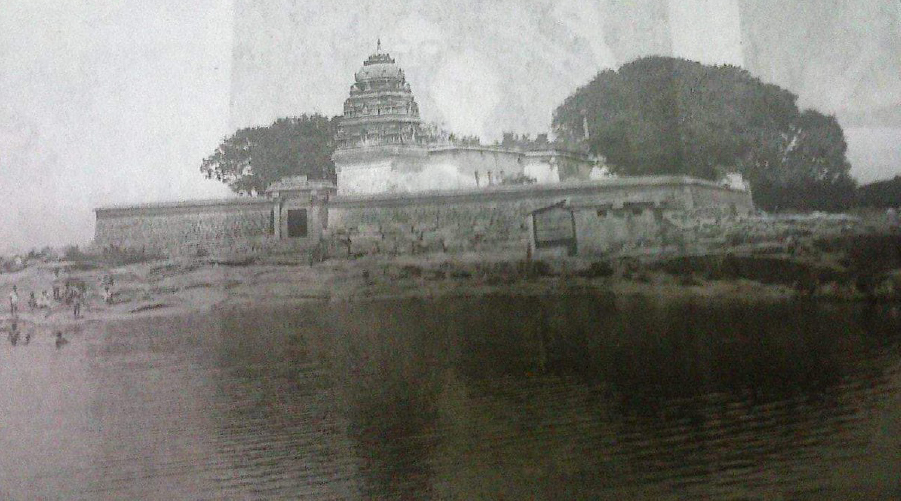
The river’s sacredness is further exemplified by several temples located at her banks like Dodda Ganesha, Dodda Basava, Gali Anjaneya Temple, Gavi Gangadhareshwara Temple and Kadu Malleshwara Temple as the popular ones. The Gali Anjaneya Hanumantha Temple dates back over 600 years and had been formulated by Sri Vyasaraya of Channapatna in 1425, the then Rajguru of the Vijayanagar Empire. The temple is situated at the confluence of the two rivers—the Vrishabhavathi and Paschimavahini.
The Disheveled Present:
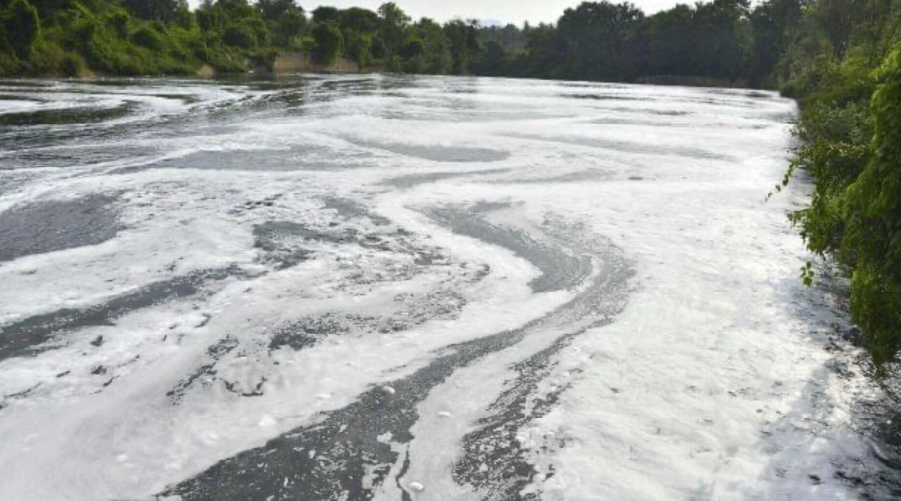
The swirling river which once used to swarm with life, enough to sustain the entire western Bengaluru, has now reduced to a trickle of polluted stream and often seen as sewage drain. The water once utilized as ‘sacred water’ is now proved unfit for drinking as it contains numerous hazardous substances. It has been found that the unchecked flow of industrial pollutants and sewage waste, and enormous plastic material presence has been dumped in the river. It is categorized as one of the most ‘deteriorating’ rivers of the country today. In the late 1960s, the 57 kilometres in length Vrishabhavathi river was considered the picnic spot, often visited by flocks of people travelling from far off regions to spend good times at its banks. With the grace of pollution and mistreatment of the present population, the only sacred river originating from Bengaluru is marked as ‘Kengeri Mori’, which means Gutter of Kengeri—a disappointing fact.
It has been devised that the froth and stench generated out of River Vrishabhavathi directly impacts the environment and ecosystem of Bengaluru, eventually deteriorating the groundwater and affecting the health of people. The eatables and vegetables cultivated with the river water in the city’s outskirts end up at the dining tables of the town’s residents. Incidentally, the deterioration and damage of the river initiated around 50 years back during the advent of industrial areas along the catchment regions nearby the river in places like Peenya, Yeshwanthpura and Kumbalgodu. With further evolution after that, industrial effluents started damaging the river badly. But most importantly, at present times, the most significant pollutant and deteriorate is domestic sewage.
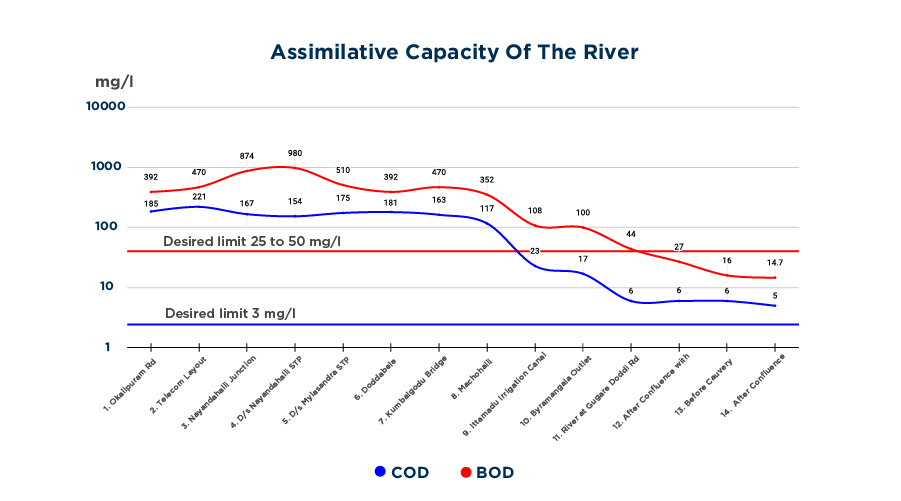
Source: Bangalore Environment Trust
Impact Of Domestic Sewage:
Domestic Sewage has a significant contribution towards the bulk of pollution in the context of the volume. Usually, the inhabitants of Bengaluru and its surroundings do not connect their sewage with lines of civic authorities. These lines are specifically to carry the domestic effluents to the treatment unit. Instead of connecting their sewage to lines, people relate it to stormwater drains that bring them to the river.
As a significant portion of the industrial effluents is non-biodegradable, this too poses a strenuous issue. Eventually, the entire nature of the river has already been altered due to budding pollutants. During early times, the River Vrishabhavathi was considered a seasonal river that used to flow in monsoons. It is regarded as the perennial river at the current juncture, for the significant part being occupied by the sewage of Bengaluru. It has been estimated that sewage alone flows in the river for 6-9 months, contributing to 500-600 million litres per day.
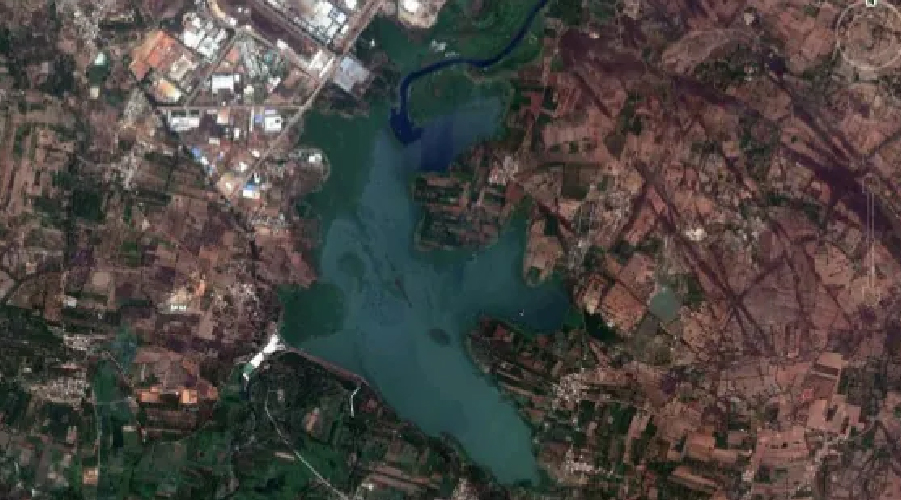
Untreated waters of Vrishabhavathi enters Byramangala tank which irrigates vegetable gardens, orchards and paddies.
Source: India Water Portal
Surprisingly, the perceptions are that the river water gets treated at the Vrishabhavathi sewage treatment plant in Rajarajeshwari Nagar. Still, at the same time, the treated water gets polluted equally on reaching Pattanagere, settled at 1.5 kilometres distance. With colluding untreated industrial waste and detergents, the enormous foam gets generated in the river that depletes its nature and originality. Being alkaline in nature, the river’s flow engenders it to toxic froth that can merely be seen across the Mysore road. The holy river has become a dump yard for local people, indeed. The most pristine river is now considered as the Promised Land for rag pickers!
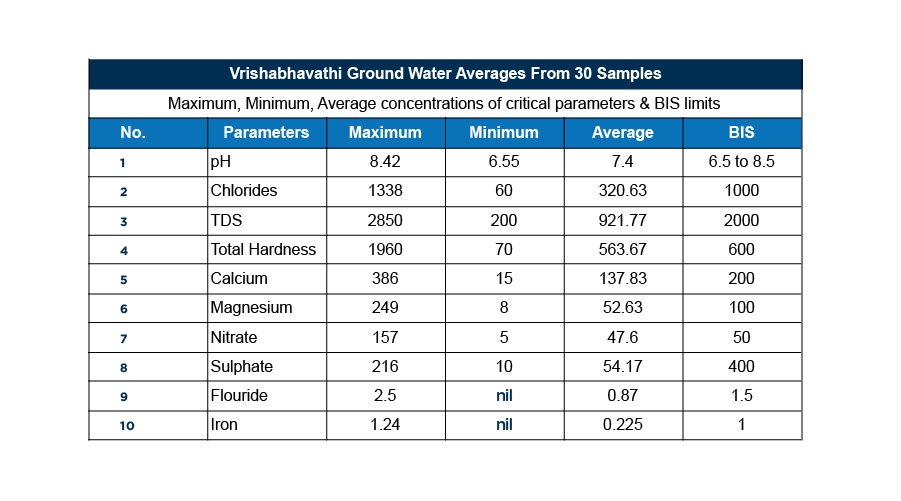
Source: Indian Water Portal
Impacts On Health of The Locals:
In 2006, the government took initiative to clean up the river as it started affecting the local people critically. The observations in the past were that local people would get infected by water-borne diseases leading to dangerous health hazards. The groundwater near the Byramangala tank had been closely monitored, occupied with arsenic and zinc, hazardous toxic pollutants.
Moreover, the central part of agriculture has been found to deteriorate with sewage water. Vegetables, cereals, coconut, and fodder are contaminated with sewage water and eventually it impacts local people’s health. Despite regular clean up by sewage treatment plants, no significant change has been observed. Undoubtedly, the plants must have reduced the toxicity level of the water; the waste origin still required to be abolished. The only thing is finding the most effective and sustainable ways to address the significant issues.
Actions Plans For The Revival:
If we have to revive the river water, it must be a sustained and systematic contribution that requires a long time. Major institutions and companies being settled on the banks of the River Vrishabhavathi are required to take strict action or initiative on their own to help themselves and the local government, authorities, and local people.
The casual and non-serious attitude of local people has eventually cast a vast ecological shadow on the city river, deteriorating the entire ecosystem. Some easy yet valuable steps can open the doors towards preventing water pollution issues. They will equally formulate an ecological and environment-friendly Root Zone WasteWater Treatment in nearby industries and lofting buildings and offering tax benefits and other incentives like CSR to nearby initiatives which allow only treated water to the river. Utilizing the Nullah Park Concept from Pune to further filter and clean small drains that flow into the river can be another effective step. Water hyacinth cultivation filters toxic chemicals like lead, mercury and cadmium. Diatoms like Nualgi can be used to purify the water that drains into the lake.
Furthermore, the sewage entering the river must be diverted to sewage treatment plants. An emphasis on collecting and treating the effluents of industries at effluent treatment plants and groundwater tables can be beneficial. In this way, groundwater can flow into the river. However, the project might take several years. Meanwhile, the local people must be awaked about the ill-effects of throwing domestic waste into the river. They should be instructed about the diseases that can affect their health. Below are a few steps taken by Govt. Of Karnataka & citizens of Bengaluru.
Policies Adopted by Karnataka Government:
Treating Bengaluru’s polluted Vrishabhavathi River has become a major consideration for the Karnataka Government. Various initiatives have been taken by the government and national authorities like below:
Rs. 1500 Crore Project to treat river water:
Recently, the Karnataka government has planned to start up Rs. 1500 crore project in an account to treat the Vrishabhavathi river, which is filled up with sewage, froth and domestic waste. Mr. C.P. Yogeshwar, Minister of environment, ecology and Tourism has also added that Karnataka Government along with irrigation authorities have been planning to treat the water of the river and make it fit for irrigation and other purposes.
National Environmental Engineering Research Institute’s Initiative:
The government has accepted the suggestion recommended by NEERI (National Environmental Engineering Research Institute) that involves forming wetlands after every five kilometers so that the river water of Vrishabhavathi cleans up naturally until it reaches Arkavathi in Kanakapura.
Byramangala Diversion Project: The Byramangala Diversion Project, proposed to divert 500 million liters of toxic & frothy waters from Byramangala Tank to the downstream river, thereby preventing the tank from being destroyed. The project was criticised by citizens and Bengaluru High Court stayed all further works on the project as it involved diverting the course of River Vrishabhavathi.
Implementing treatment plants in Universities:
Planning is on the way to implement a STP (Sewage treatment plant) in Jnanabharati campus of Bangalore University which would be quite beneficial. The estimated cost of the project is Rs. 150-200 crore and will be used to treat Vrishabhavathi sewage water as the river flows through the area.
Remodelling River Valley Project (2005):
In 2005, the then Chief Minister Of Karnataka, Dharam Singh proposed Vrishabhavathi River valley remodelling plan which involved widening of the river while adopting measures to abolish inundation.
Initiatives By Citizens & NGOs:
Campaign #SaveVrushabhavathi: In 2019, a massive initiative was taken by citizens of Bengaluru, who volunteered to start a campaign to raise awareness about the river’s plight. Approximately 12,000 volunteers participated in a 6 km run from Kengeri Satellite Town to Bangalore University campus.
Restoring The Pride Of Bengaluru:
River Vrishabhavathi, a tributary of Arkavathy, is facing tremendous ignorance & the brunt of the city. The lack of plan in this regard is creating a grim situation that spells doom for the lifecycle of the river. Such neglected conditions are a sheer invitation to dreadful health-related issues and disorders that the local people have already faced. Bengaluru Water Supply and Sewerage Board (BWSSB) states direct dumping of domestic waste into the storm water drains instead of sewage lines, eventually leads the untreated waste to the river increasing pollutants.
A well-planned, transparent and open awareness campaign about the ill effects of dumping such sewage into the river water should spread amongst the residents. For saving the wildlife and people living there, strict steps and interventions must be taken into account. Some of the helpful steps have been discussed above, but this can only be possible with equal collaboration and cooperation by local people.
Traditional asset management approaches are required to be reformed to maintain the health of the river. Joining this valuable moment of reviving the River Vrishabhavathi is the first step towards making a difference. The cost of ineffectual actions and lost time is relatively high. Ignoring such a severe issue is just like spending life in an illusion.
We, and only we, together can make a difference if we want to bring our river back to life.


